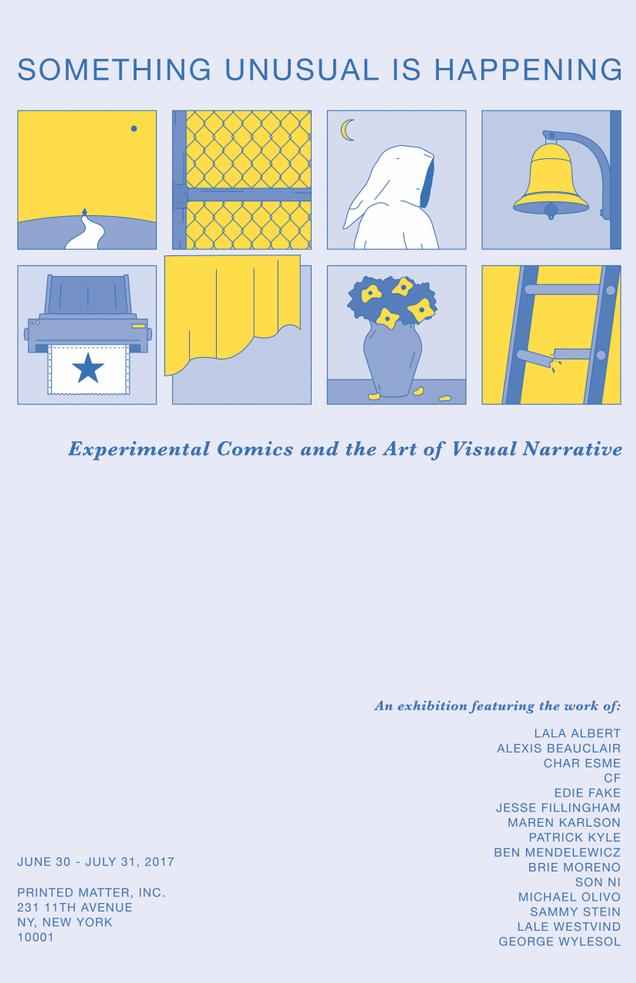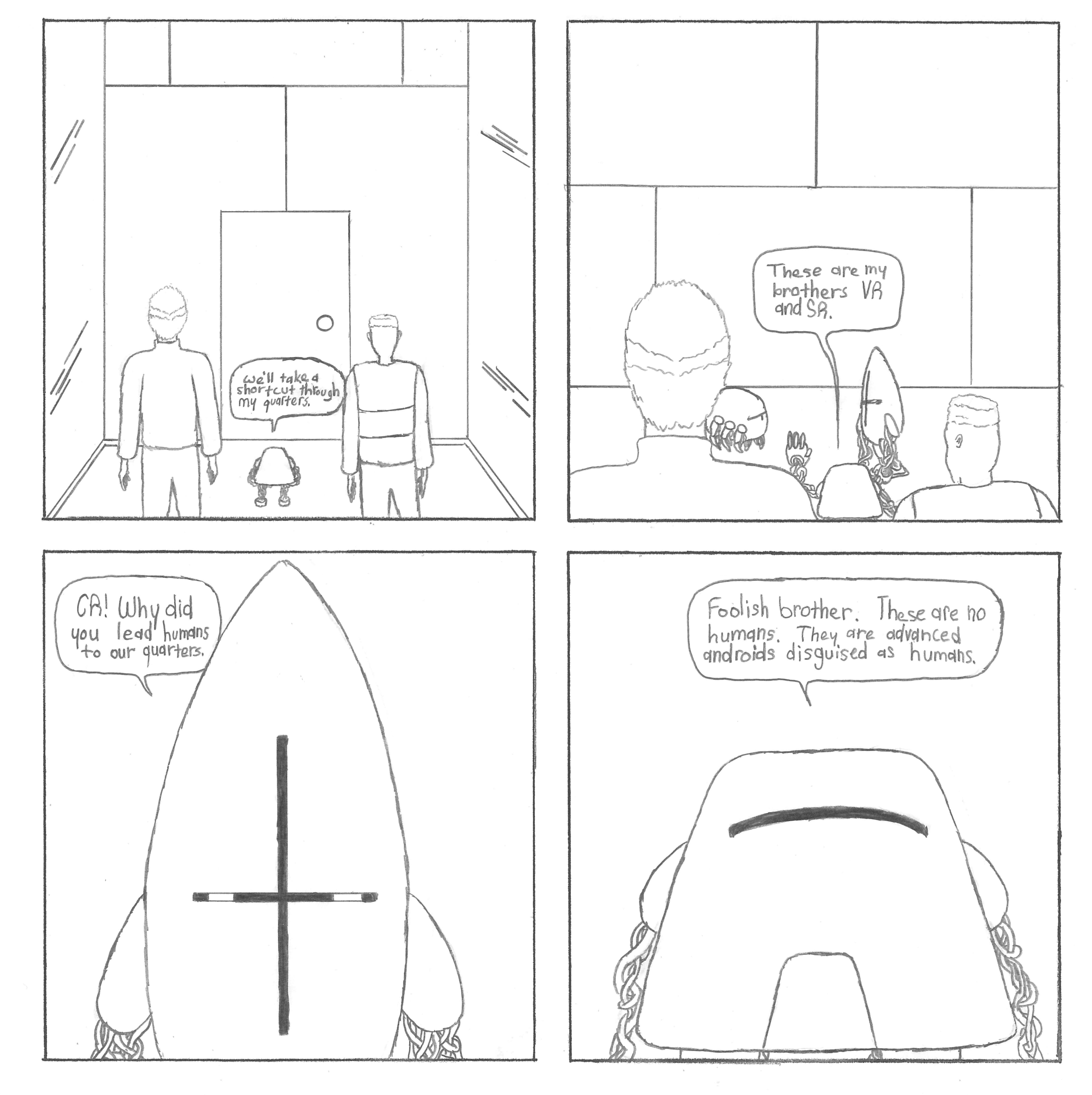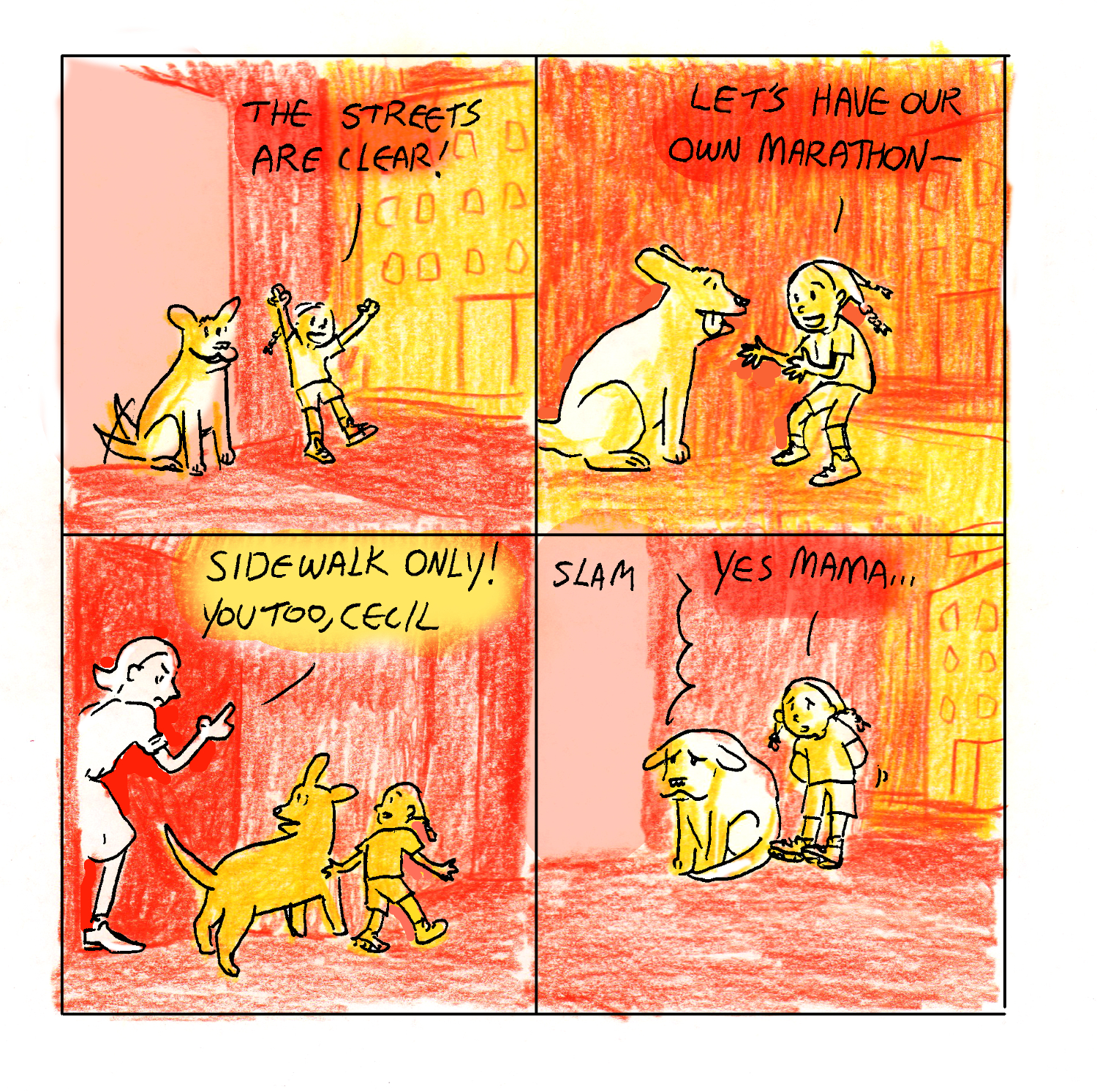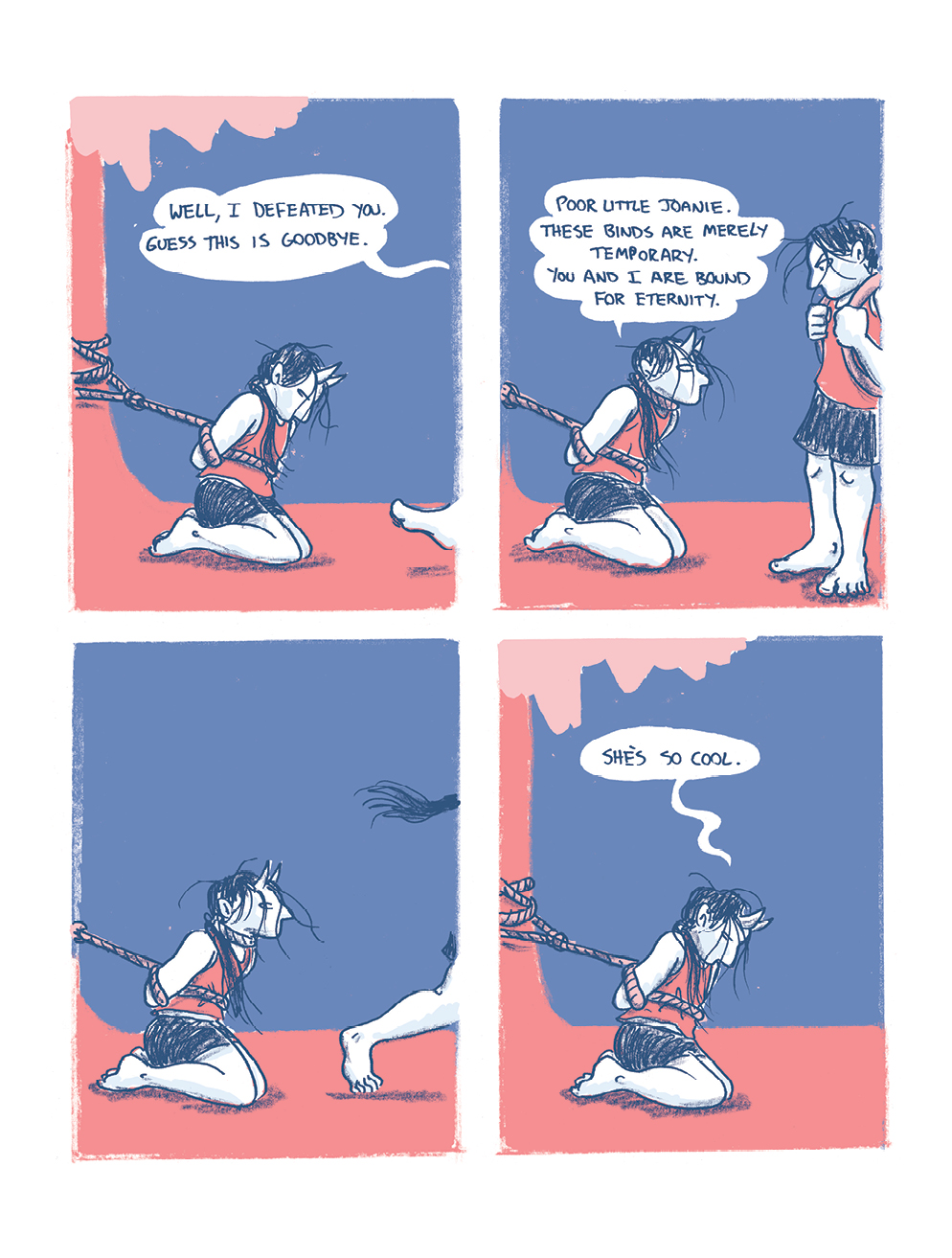Aaron Cockle here today with New Chinese Comics; Zadie Smith on Lynette Yiadom-Boakye; Clowes @ Cracked; Philip Guston; Something Unusual is Happening at Printed Matter; Matthew Thurber’s Cartoonist Run-down
—————————————————————————————————
If you can’t make it but would still like to buy a book, they will be available at Desert Island after the 29th and through our website: paradise-systems.com
—————————————————————————————————
Under-Song For A Cipher
Zadie Smith looks at the Lynette Yiadom-Boakye exhibition currently on view at the New Museum.
In many of Yiadom-Boakye’s interviews, she is asked about the source of her images, and she tends to answer as a novelist would, citing a potent mix of found images, memory, sheer imagination, and spontaneous painterly improvisation (most of her canvases are, famously, completed in a single day). From a novelist’s point of view, both the speed and the clarity are humbling. Subtleties of human personality it might take thousands of words to establish are here articulated by way of a few confident brushstrokes. But the deeper beguilement is how she manages to create the effect of wholly realized figures while simultaneously confounding so many of our assumptions about the figurative. The type of questions prompted by, say, Holbein (What kind of a man was Sir Thomas More?) or Gainsborough (What was the social status of Mr. and Mrs. Andrews?), or when considering a Lucian Freud (What is the relation between painter and model?), are all short-circuited here, replaced by an existential query not much heard in contemporary art: Who is this? The answer is both literal and liberating: No one. Nor will the titles of these paintings identify them.
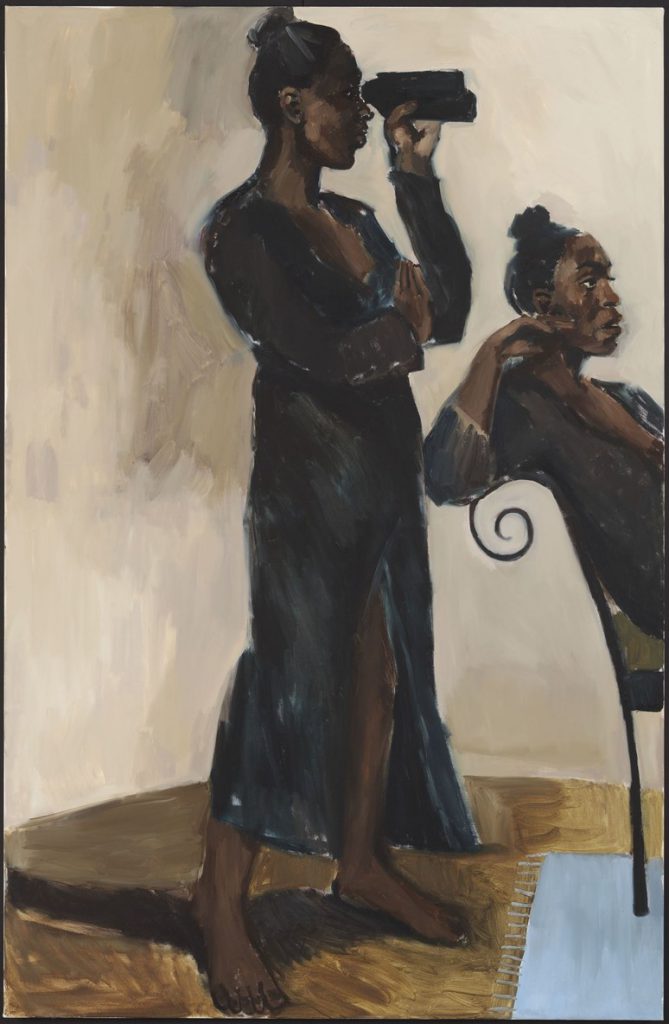
—————————————————————————————————
‘MAD Magazine in the 80’s seemed staid and a former ghost of itself, but Cracked seemed exciting and filled with new blood (and old) that spoke to my budding anarchic mind.’
At the Last of the Spinner Rack Junkies blog, Isaac Chance has uploaded a bunch of comics Daniel Clowes did at Cracked Magazine in the 1980’s.
Clowes would produce work for Cracked from 1985 through 1989. During this period he was also writing and drawing his own comic book Lloyd Llewellyn for Fantagraphics. After six issues, Llewellyn ended with a Special in 1988 and Clowes began Eightball in 1989.
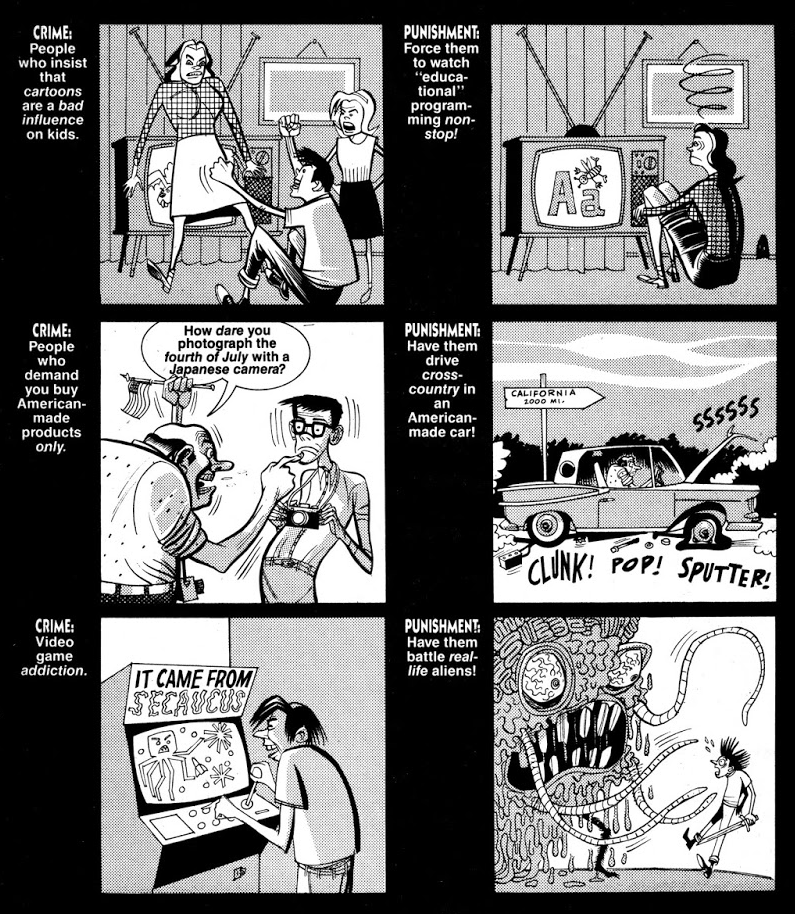
—————————————————————————————————
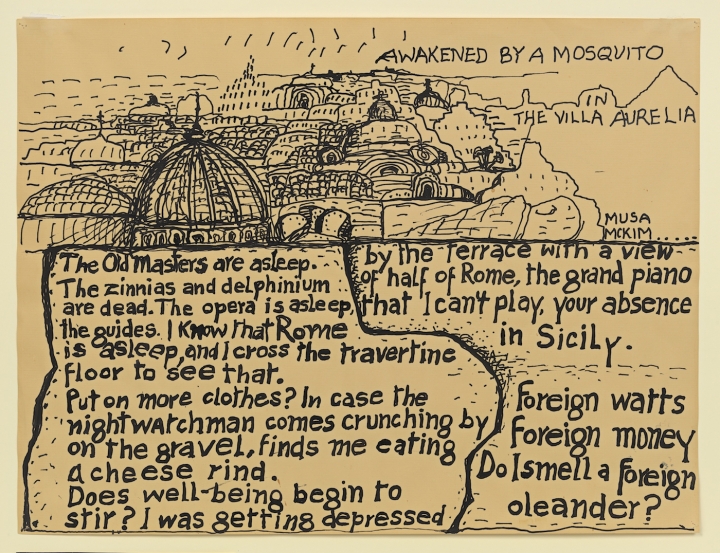
Philip Guston and the Poets
At Hyperallergic, Cara Ober looks at Guston’s work and the role that poetry played in its making, on exhibit at the Gallerie dell’Accademia (Campo della Carita, 1050, Venice) through September 3.
The exhibit is loosely curated around the five poets who are said to have had the most significant impact on his work — Wallace Stevens, Eugenio Montale, T.S. Eliot, W.B. Yeats, and D.H. Lawrence — and this structure provides unusual opportunities for thematic, rather than historical or formal, groupings. But at the core of the exhibit is an idea that’s both cohesive and revolutionary. The show argues that Guston’s staying power — grounded in fresh oddness, compelling authenticity, and dodgy compositions — was a direct consequence of his relationship with poetic language and form, as well as the ideas of the poets who wrote them. Rather than a romantic inevitability, Poets offers a pragmatic and collaborative handle to Guston’s career as a prolific artist and maker; it attests to the power of verbal and metaphorical language in nourishing his visual oeuvre. The exhibit also argues that silence is necessary for a visual artist’s development; it suggests that Guston’s leaving New York, the epicenter of the art world, was not only helpful, but essential to his work.
—————————————————————————————————
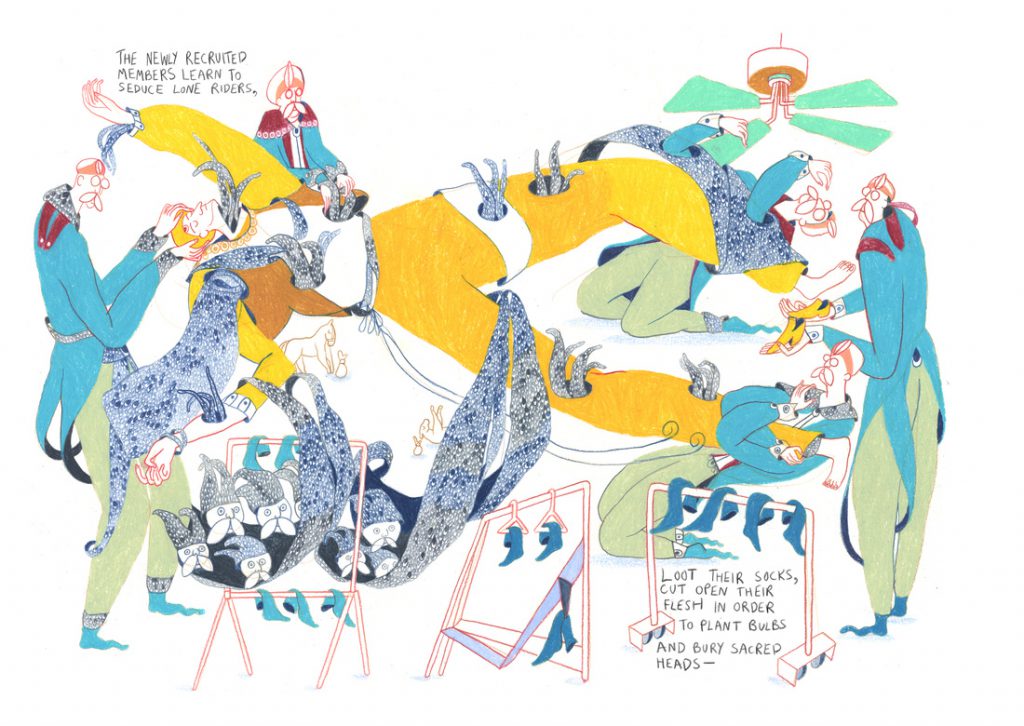
‘Why were there no comics in the Whitney Biennial, again?’
Matthew Thurber discusses work by 10 Cartoonists Every Art Lover Needs to Know
Including Austin English:.
Comics-as-poetry is an established thing: See the work of Juliacks, Sarah Ferrick, and publishers like Sonatina and 2dcloud. English’s work was influential on this branch of comics-making. Unlike commercial comics—which traditionally convey emotion with simplified facial expression—the muddy, creased faces of English’s characters are opaque. I see a lot of George Grosz, Francis Bacon, and Willem de Kooning when I look at his drawings, which tend to be small and heavily worked with watercolor and colored pencil.
Lale Westvind:
The cartoonist’s background in traditional oil painting, video art, and animation led to her creating self-published comics at a heroic pace. In HAX, Amazonian warriors battle airplanes under Lichtensteinian Ben-Day dot skies. Her early animation Organism Test (2009) is a key to later work. Thousands of hand-drawn frames depict blob-creatures writhing in the desert, while hybrid motorcycle creatures race towards each other to collide at incredible speed: a copulatory act that generates new life. If Jack Kirby adapted J.G. Ballard’s Crash into a Captain Pronin cartoon, it might begin to resemble Westvind’s filmic oeuvre. Recent animations for the band Lightning Bolt and Morpha! Utila!, for the online TV channel Super Deluxe, are psychedelic masterpieces.
And Keren Katz:
Katz’s work, like that of Matthew Barney or Mika Rottenberg, has its own logic. Her storytelling voice seems to link the divine nonsense of authors like Daniel Pinkwater, William Steig, or Edward Gorey with surrealist writers like Leonora Carrington. Her comics are Truly Weird, the highest compliment I can give. With drawings executed in confident colored pencil, her figures stretch, bend, and topple in a manner reminiscent of contemporary choreography. (Indeed, Katz studied dance and has mentioned Pina Bausch as an influence.)
—————————————————————————————————
The publications included in Something Unusual is Happening share a common interest in non-conventional storytelling, with each artist crafting a distinctive form of visual language that departs from the familiar narratives and formats of traditional comic art. The works explore a range of interests and fixations; allegories of personal transformation and enlightenment, cautionary tales of advanced technology, voyeurism and computer surveillance, as well as meditations on the act of comic-drawing itself.
At Printed Matter, June 30-July 31, 2017.
—————————————————————————————————
A Cosmic Journey – 6-27-2017 – by Cameron Arthur
————————————————————————————————
Suzy and Cecil – 6-27-2017 – by Gabriella Tito
—————————————————————————————————
Joanie and Jordie – 6-27-2017 – by Caleb Orecchio

